How did you get into music and engineering?
I started taking piano lessons when I was in third grade, then guitar in middle school, and eventually started playing in bands. Being of the generation where everyone had [Apple] GarageBand or a [Digidesign] Mbox, I wanted to record with the friends that I was making music with.
You had a little bit of gear as a high schooler to do some recording at home?
Yeah, the high school I went to in Coronado, California, had a satellite school program called the Coronado School of the Arts. We had all the normal high school classes and then an after-school program. They had a little computer lab that had a couple computers with [Digidesign] Pro Tools. I spent hours after school every day with my two friends, having a band and learning cover songs. We liked writing our own songs and started to learn about recording – whether it was through making demos or messing around.
Did you have an aspiration to get into music as a career someday?
Yeah, definitely. It was in that period that I got more obsessed with the idea of making records. I wanted to be Jon Brion [Tape Op #18] when I grew up.
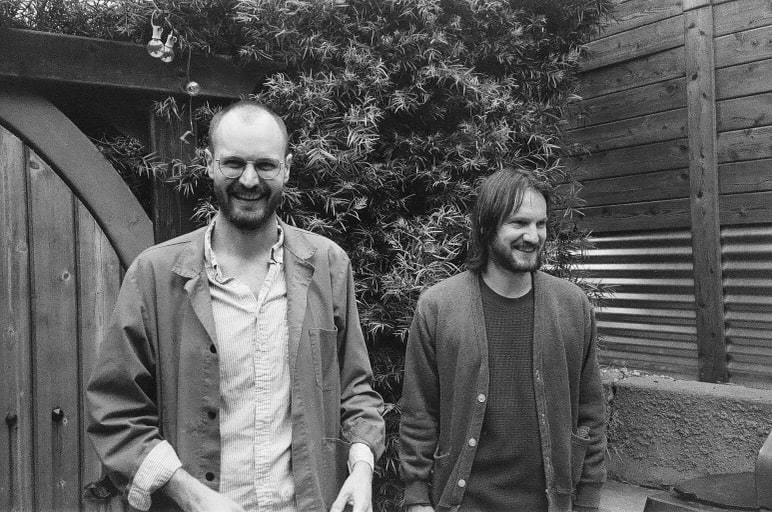
Did you end up going to school for engineering?
I went to UCLA, and I was in the ethnomusicology program. It was great – we'd spend a quarter on the music from Africa and the next on the music of Asia. We were exposed to so many things. Also, just being in L.A. was another big part of the decision of me going there. All of the music that I was excited about seemed to be coming out of L.A., and it made sense to be around there. But when I was in that program, the only real recording classes were through the film school, where there was a studio they had built as a scoring stage for the film students. There was a decent sized room, and they had a Digidesign Control 24, and they had some good mics and instruments. There were two professors, David McKenna and Beth Sweeney, who ran beginner and advanced level courses in recording. If you passed those, you could book studio time. I took those as soon as I could. I was playing in a band back in those days and thought, "Okay. We have a studio where we can go and start making recordings." I defaulted to the producer/engineer role, and that's how it started.
You worked out of the original Tony Berg [Tape Op #121] Zeitgeist studio house, right?
Yes.
How did that happen? Was it a knock on the door, like everyone else says? [laughter]
No! [laughs] That's how Shawn [Everett, Tape Op #115] ended up meeting Tony, but I had a mutual friend from college who knew Blake [Mills]. I first became aware of him as a player, when he was touring and doing sessions with Jenny Lewis and a bunch of other bands I liked. It was right around the time that his first solo album [Blake Mills] was coming out, and we met after a show at The Echo. After that, every couple months I would check in and say, "If you need an intern, let me know." I was aware of Tony Berg and Shawn Everett's work at that time, as well. Finally, after a few months of slowly pestering Blake, I heard back from him and he said, "I'm producing a record for Sara Watkins [Sun Midnight Sun]. My friend Shawn is engineering it. We're doing it at my friend Tony's home studio in Brentwood. Come hang out." That was the holiday break of my last year at UCLA – around December 2011 – and that's the only job I've ever had since.
What was your role on Sara's record?
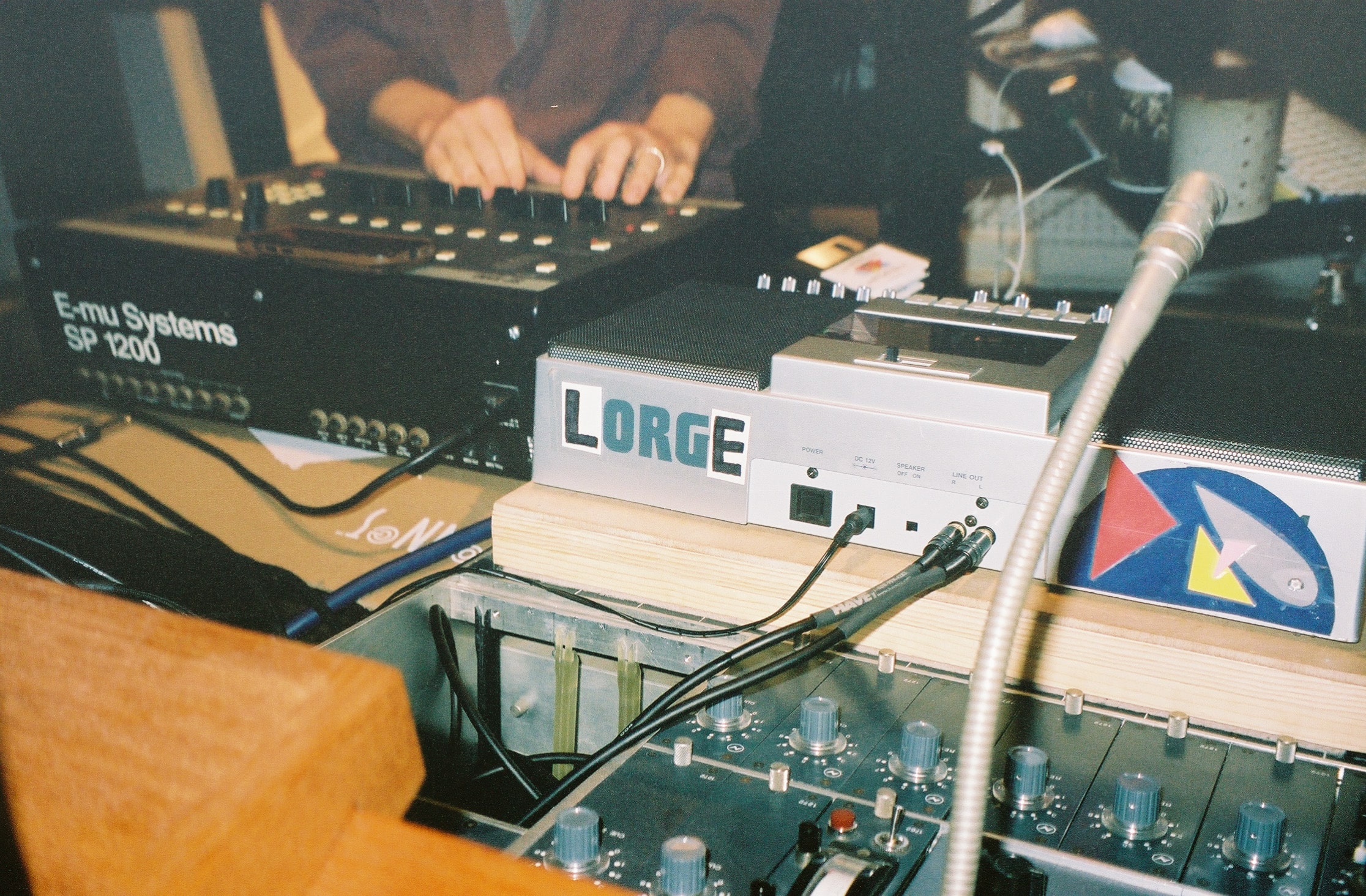
Just a classic intern thing. Blake was producing and Shawn was engineering, so I was picking up lunch and taking out the trash at the end of the day. But starting from the very beginning, I got to sit in a chair next to Shawn all day, watching him and attempting to follow along. To this day, he's still probably the fastest-working engineer that I've ever seen, in terms of Pro Tools chops. Blake, Shawn, and Tony were all super welcoming and encouraging. I was starting as an intern, but started to fill the role of assisting as I got more comfortable in a studio with nicer gear. That was the first time that I learned what a power supply for a tube mic was. The next big step, between getting that first real-world experience into actually doing the job, was doing a program at the Banff Centre [for Arts and Creativity] in Canada, which is a government-sponsored arts center. They have music, visual arts, dance, theater, and all kinds of residencies. To support the music programs, they'd hire a recording staff of eight to ten engineers to do sessions in the studio, as well as recording all of the live concerts. There was even a bit of location sound for film shoots, because someone would be making a documentary – doing an interview – and they would need someone to set up a lavalier mic and a boom mic.
What made you want to go there when you were already working with Tony and Shawn?
That's where Shawn did all of his schooling. I went there for six months, which is a regular term for their work-study program. Shawn was there for four years! The idea was that if I did this program, I would become much more valuable to them. It was good for them to see some advancements in my in my skillset. From the end of my time at Banff, going forward was when I started getting jobs and being the engineer on a session. The first full album that I worked on when I got back from that program was Ethan Gruska's first solo record [Slowmotionary] that Tony was producing. I think that was the first commercially released album that I had an engineering credit on. I did all of the recording, and then [Bob] Clearmountain [Tape Op #84, #129, #151] mixed it. I guess probably, partially through youthful ignorance – it was really quite a simple setup for recording that. Tony has an [AKG] C24 [stereo tube condenser mic], so it was a C24 in the middle, facing back at the piano, and then a [Neumann] U 48 for the vocals. That was it, for the majority of the record.
Nowadays, do you get pretty creative with tracking techniques or printing effects?
Yeah, although it varies from project to project. There are still some sessions that might be more of a straight ahead natural approach. I've been working on a new album with Gabriel Kahane, who I've made a couple records with. I came up to Portland to work with him at Flora [Recording & Playback], and the way we're working has lots of live effects – contact mics going to delays with amps in the room and a binaural head recording them. Ideally, whatever could have been a choice as a mix treatment we instead tried to get it happening in the room. That way we can almost hear that final product as he's tracking it.
I wanted to know a little more about your mix process these days. You work out of Sound City Studios, and you're in the room that has the Neve console. Is the Neve a big part of your mixing?
It depends. It's definitely a hybrid mixing setup; summing is usually happening in the box for automation and recall and for flexibility, to be able to use plug-ins and such – usually with a hardware insert on the mix bus so there's some compression and EQ happening with analog gear. Usually, I'll do a lot of channel-specific hardware inserts on the mix, so it's not so much building a mix on the desk that gets summed that way, but rather using the EQs and gain staging on the console with all of our outboard for the first couple passes of the mix. We're getting tones that way, and then, at a certain point, committing everything and rolling in the box from that point on.
On Blake Mills' new record, Jelly Road, how much foresight is there, in terms of how sub information or high frequencies are introduced?
A lot of the tracks started with Blake and Chris Weisman, our other main collaborator on the record, playing guitar together. Or, a lot of times, it would be with Blake singing live while tracking guitar, and then everything else is an overdub on top of that. There's a lot of experimentation as we start putting on layers, and the order in which we do those influences the others that go on next. A song like "The Light is Long" is very acoustic guitar driven, and that's doing all of the rhythmic and harmonic information in the midrange, so the bass needs to sit way below that to give a gravity to it. Percussion needs to be tambourines and cymbals that all live above that. The acoustic guitar is taking up so much space that there's not room for a full drum kit. Blake is definitely the kind of person who takes a lot of care in listening before ever making a choice. He won't grab a guitar, sit down in the control room and say, "How can I play on this?" He'll sit and listen to it a couple of times and then say, "I don't think this needs a guitar. I think what this actually needs is a synth to expand the top end."
Did you track this record to tape?
Some of it. A lot of those basic tracks, like the first couple guitars, the lead vocal, and early overdubs were done on tape. Then we would dump it into the computer; overdubs and mixing were done in Pro Tools.
There seems to be a lot of control over the length of what's going on in the low end. Are you getting pretty hands-on to control the length of those cinematic kick moments?
Yeah, it's a mix of techniques. I'm trying to get it as close to what we want in the recording, spending a lot of time getting the damping just right on specific drums, and then playing with compression in tracking. I love the SPL Transient Designer for this; it's essentially doing compression, but it doesn't sound like a compressed drum or bass. Most of the time that happens before the mix; it's part of the production process. Our mixing process is collaborative; I can spend the first half of the first day on a mix, doing some problem solving, and then Blake can come in with the clarity already figured out. Maybe there were some low mids that are cleared up in the guitar and bass so we can hear the kick better. Then he'll go in and edit, or ride the kick so that every single one is the perfect length, so that it has the right musical feel.
Oh, really?
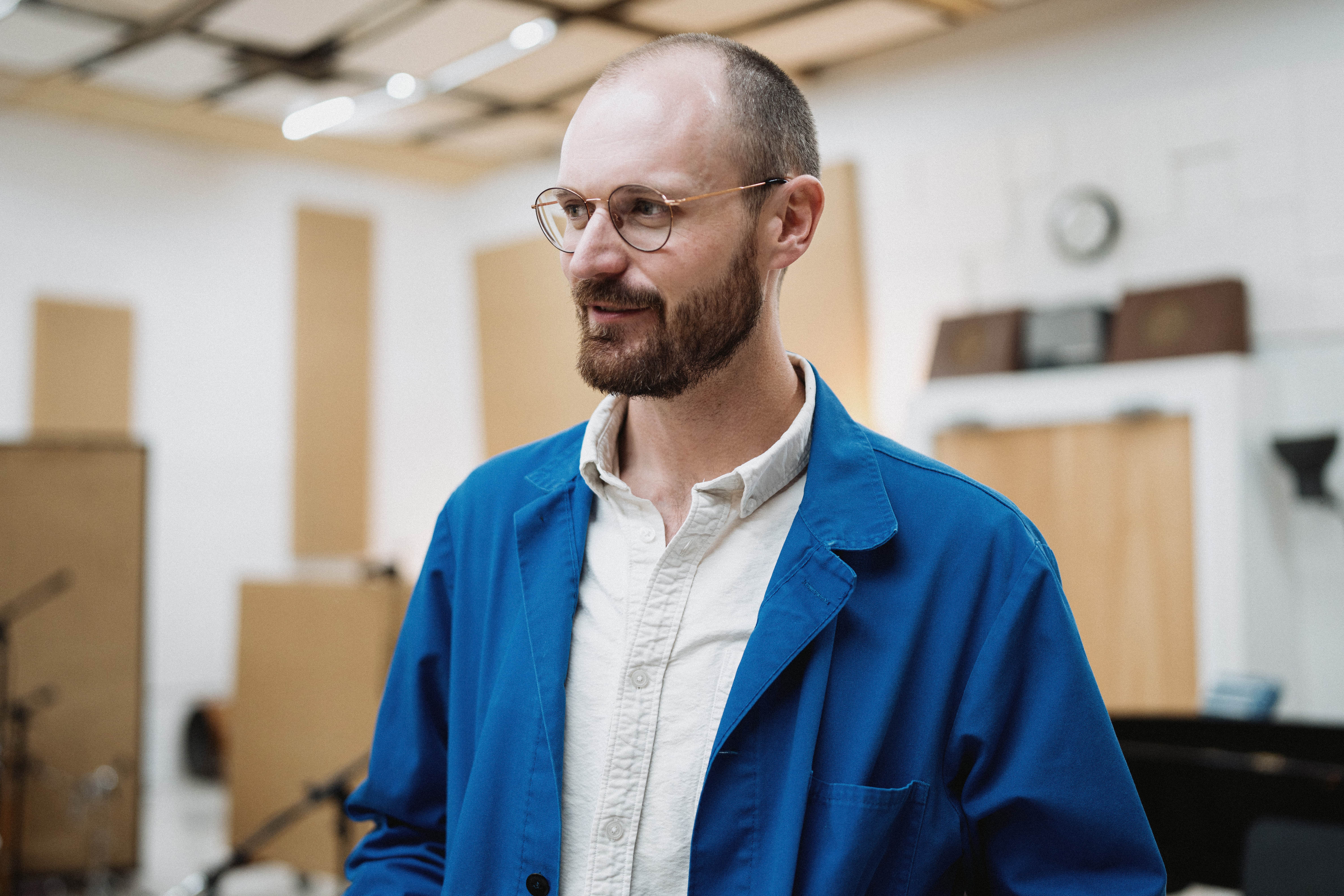
Yeah, he does a lot of that himself, whether it's during the mix or in the production process; he is a comping master. He has such a good brain for music, and feel and rhythm. We've worked together for ten-plus years, but the last five and a half that we've been in Sound City, we've been in this room together most days. We hit a creative stride working with Pino [Palladino] on Notes With Attachments that continues on Jelly Road. There is certain stuff that we don't even need to talk about anymore. He'll come in from doing an overdub, and I'll get out of the chair and let him sit down because I know that he knows which take he wants to start comping from.
That's the dream, right?
Yeah. Since we're together so much, we'll develop shared references. There was a long time where we went deep down the Talk Talk/Mark Hollis/Phill Brown [Tape Op #12] rabbit hole. One time, he bought us both copies of the Phill Brown book [Are We Still Rolling? Published by Tape Op] and we were going out for a gig that he was playing guitar on. We're sitting in the airport at the gate waiting for our flight, both of us reading the same book, and getting through a chapter and going, "Wow, can you believe that part where he talked about this?"
We first met when you reached out asking if I knew anyone in Portland that you could rent Yamaha NS-10s from for Gabriel's record. Do you always mix on NS-10s?
Yeah, Tony has been an NS-10 person forever, and Blake and I inherited that from working with him. At Zeitgeist, Tony had NS-10s with a subwoofer, and that was the only monitoring system. He didn't have any larger mains. When we moved into Sound City, we brought in NS-10s as the primary monitors. There also are mains that are the original Augspurger designs for this room. We got those back up and running when we moved in, and George Augspurger came out and tuned the room and everything. We use NS-10s with no sub, and we have the mains. The mains are incredible sounding and useful in a way that I haven't experienced that much in other studios. That's how Greg Koller usually mixes too. He has mains and other references, but he was instructive to both Blake and I on how to listen in a way of understanding what your low end is doing without actually hearing it specifically with a sub. We're on the NS-10s, and I can hear the low end reacting in this way, as well as how it's affecting the range that it gets up into the NS-10s. Can you hear your bass and kick drum on the NS-10s without any of the sub information? I feel going to the NS-10s with no sub was the latest thing that helped me improve upon sculpting tones, and getting sounds that translate outside of the studio faster.
Mastering engineer Patricia Sullivan [Bernie Grundman Mastering] has been a common thread among many of the records you and Blake have worked on. What's your relationship like with Patricia?
We've worked with her for a long time. I think the first thing that Blake worked on with Pat was his second solo record, Heigh Ho, because Greg Koller, again, was engineering and mixing that one and he had worked with Pat for a long time. Greg's main gig has been engineering for Jon Brion on all of the film scores and records that he was producing. Pat is known for doing film scores and works at Bernie Grundman in Hollywood. We have total faith in her to understand how to present mixes in the best way and get them up to a decent level, but also with the utmost respect to dynamics and the feel of the music. Because she's spent so much time working on that other side of music, she really understands music that has a lot of space in it but that is also full fidelity, in a way even more so than classical music. It's like full orchestra with electronics and overdubs. She understands how to work with a full frequency range like that.
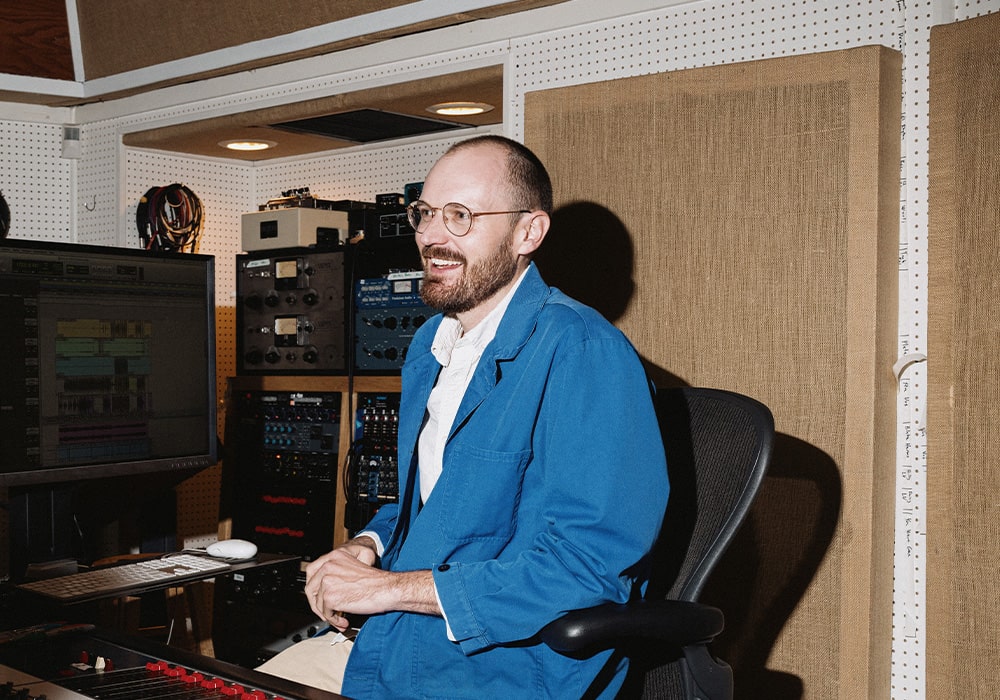
Speaking of full frequency range, I love how you captured the chimey bells and high frequency percussion on Blake's records. They sound tiny, but they also make a huge impression in the mix and are very defined. How do you go about recording and mixing those sounds?
It's less mix or recording trickery and more about finding the perfect sound. Sometimes it's just acoustically the right sound. Or sometimes it's treated in a way where we're going to high pass it so much so that it can be quiet in the mix and doesn't take up any space, but it also activates some height in the mix. We have a bunch of Sony C-48 microphones here and rely on them a lot for that. They're really lifelike. I wouldn't say that they're specifically bright, but they sound good in that range.
What are some of the techniques you use to get these otherworldly sounds you're constantly cooking up at Sound City?
It's often less about the recording techniques and more about the array of instruments. To name a few that are definitely not secret at this point, there are people that Blake works with who are building instruments like, Reuben Cox from Old Style [Guitar Shop] and his rubber bridge guitars. The first time using the rubber bridge guitar, we were like, "Well, this is just a completely new thing. Let's find every different way to get as many sounds out of that as possible." If we want it to be a wide sound, it's in a [Roland] Jazz Chorus [amplifier], and it has that stereo-ness to it. Or we want to have it be DI'd with fuzz, so it's this rounded attack, but it's also brightened and distorted in a way that gives it this new feeling. Lately, the Duncan Price-built fretless baritone sustainer guitar that Blake has been playing a lot has been a huge influence. It's all over Jelly Road, and it's all over the Marcus Mumford album [Self-Titled]. If it's in a clean amp with room mics, it kind of sounds like a woodwind instrument. And then on a song like Blake's "Skeleton is Walking," it's DI with fuzz and he's playing it with a slide, and it has these different textures to it.
The more unique the source material, you don't need to get all that crazy with the engineering.
Yeah. So much of the engineering process is designing those sounds and then figuring out how to capture them. It's happening during the recording more than the mixing, and that is the biggest takeaway. Being open to experimentation and using a full range of techniques to get a blend of sounds that juxtapose against each other interestingly. Our recordings have a lot of room sound on them, so having those sounds in contrast with something that is going to be DI or a contact mic – or if there is going to be a close vocal – using a binaural room setup with effects going out to amps in the room will give this really extreme depth. Which again goes back so much to the Talk Talk records [Spirit of Eden, Laughing Stock] – the combo of contact mics and binaural mics.
How did you meet up with Leslie Feist and end up working on her latest record, Multitudes?
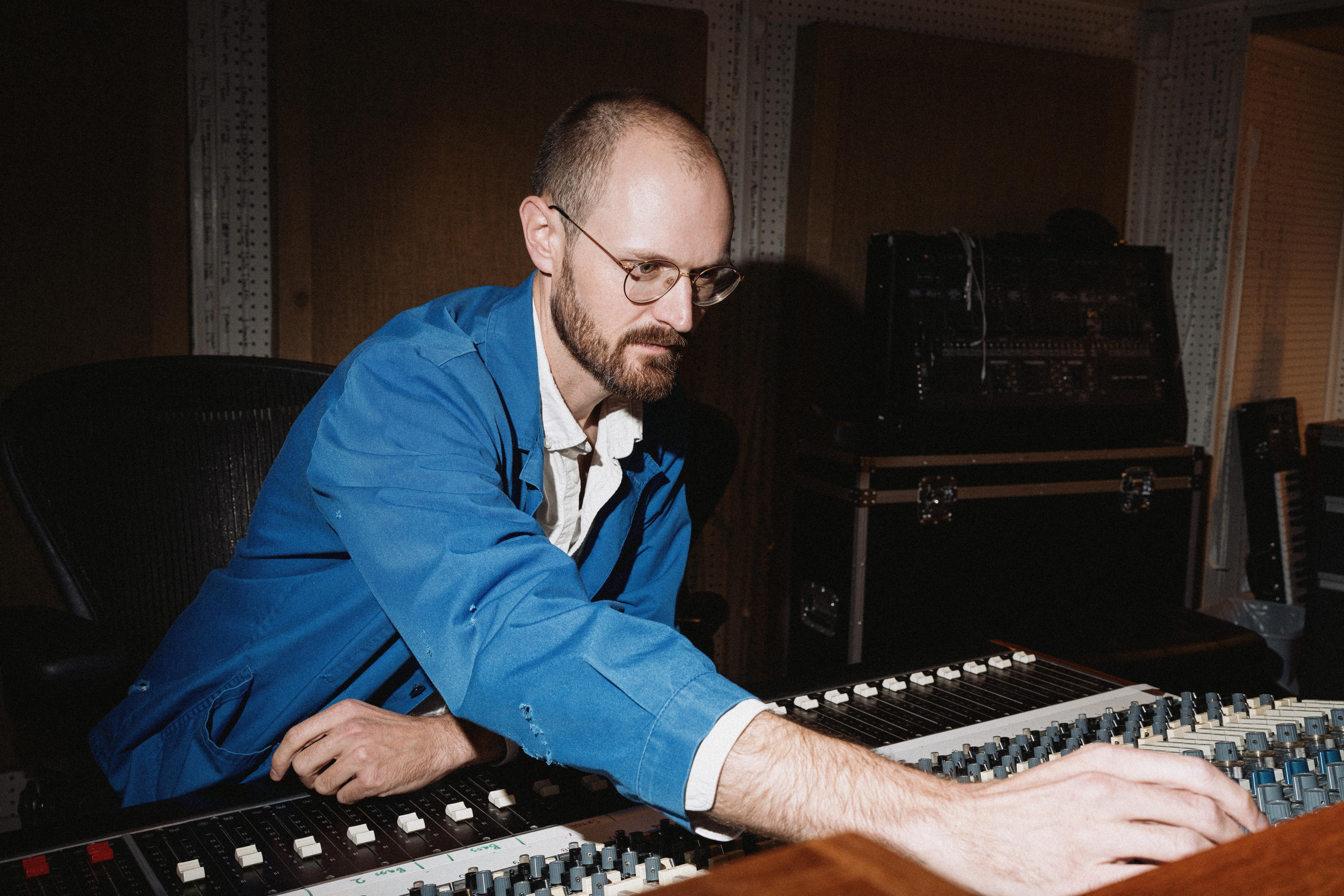
There was a group of musicians that were doing a "Song a Day" writing exercise, where everyone signs on to do ten days where they have to write a song every day, or else they're banished. Producer/engineer Phil Weinrobe is the person who organizes it. They were doing one of those remotely during COVID, and there was one round that Leslie and Blake were both involved in, so they got in touch that way. Since they were both in L.A., he said, "You should come by and see the studio sometime." That was very exciting for me because she has been one of my favorite artists for a long time. I credit her work in following the path that I have this far. Particularly after seeing the documentary Look at What the Light Did Now, about the making of The Reminder.
You mixed the record, right?
Yeah, Blake and me. She made that record with some of her longtime collaborators, Robbie Lackritz [Tape Op #96] and Mocky [Dominic Salole], along with Michael Harris doing a lot of engineering. I saw the staged version of the Multitudes show that she had done at the Shrine [Auditorium] here in L.A., which was the spring of 2022. She had developed this show that featured all of this new music that would eventually become the record, and she worked with a production designer to make it an unorthodox type of show. It was staged in the round; she and two musicians were on a small stage in the center of the space. She would turn to face different parts of the crowd at different points. On the two long walls of the space there were a lot of projections, and people going through the crowd at various points with cameras that were being projected on the walls, and they used this video feedback loop technique that's featured on the album cover. It was a striking show, from the visual standpoint, because of that. From the sonic and musical perspective, they had this immersive system with front fill speakers around her so all of her sound would be coming towards us. It would go from the most intimate solo performance to, in an instant, prerecorded vocals that were swirling around or deep sub bass. Some was played live by two other musicians, Todd Dahlhoff and Amir Yaghmai, who were also involved a lot in the making of the record. It was a completely overwhelming experience, unlike any other show that I have ever seen.
Wow!
I had seen that show, and it was living in the back of my mind for a long time. When we ended up working together at the end of that year, I felt like I had this weird cheat code to the mix. I got to experience this music in the way that it was originally conceived even before they made the recordings, because she had clearly put so much thought into how this would come across. Even the arrangements for the live show carried over to the recorded version. Getting to spend that much time listening to her voice is as much of a pleasure in recording music as you could imagine. Early on, she said, "I'm approaching this one not singing with the amp anymore. I want it to be a more natural, close and intimate sound." Priority number one was the vocal when approaching those mixes. I spent hours on clip gain and EQ automation for each song, with her vocal soloed, making sure that every single instant of it was coming across in a way that it can be as loud as we wanted to turn it up. It was recorded with no resonances or anything that pokes out, so that it can be in the forefront at all times without having to be compressed much. I spent a lot of time in [FabFilter] Pro-Q 3 [plug-in] on that one, maybe more than any other mix of my life.
What has it been like working with Perfume Genius [Michael Alden Hadreas]?
We've made three records together now, which, other than Blake's own projects, is the longest term collaboration with an artist that I've had up to this point. Ugly Season was the first one that I engineered and mixed, with Blake in the co-mix, in the way that that we do most things these days. It was exciting and fun to be a on record as outlandishly creative as we got to be with that one. It was created as not necessarily a side project, but through a collaboration with another artist. It was made for a dance piece [The Sun Still Burns Here] that dancer and choreographer Kate Wallich and Perfume Genius were collaborating on, so it gave us permission to think differently. We could be a lot more expansive and free-flowing. We went into the studio for a block of time with the intention of making his next record, while Michael was simultaneously collaborating with Kate and her dance company, The YC, based out of Seattle. The music we made ultimately debuted in that dance performance in 2019, and it wasn't until 2022 that they did a proper release of the music as an album. I hadn't met Kate in the process of making that show, but we met when I went up to Seattle for the premiere. She has since moved to L.A., and we've become friends. She is also the founder of this company called Dance Church, and it's an exercise/dance class. It started in Seattle, and now they do it all across the country; you can also watch classes online and do it alone. They have a couple of weekly classes in L.A., and I went with Mike and Alan [Wyffels] from Perfume Genius for the first time after we had done that show. It's become a big part of my life, and I go every week if I can. Getting to be in a space with loud music playing and being expected and encouraged to move along with it has done a lot for the way that I think about feel in music – in terms of arrangement and recording, but also in mixing. The balance of instruments and amount of low end – all of those choices – and how I feel them more in my body than just in my mind. It's really easy to get fixated on a technical issue or something and mix out the emotion of a song sometimes.
As we get older and work on more and more music, it's pretty important to gain those new perspectives to keep us on our toes, and to keep our brains fresh!
Yeah. To tie it back to Perfume Genius, I would say that's definitely one of the things that I love and appreciate about working with Mike and his partner, Alan, who plays keyboards in the band and is a primary part of the puzzle. He's been in the studio a lot when we've made all of the records. Mike is so open and interested in pursuing new sounds. He goes after things that are maybe uncomfortable. His creative spirit feels so authentic to him that, particularly on the Ugly Season record, we could make some pretty bold choices. And through who he is and his approach to writing and what he wants to get across, there are not a lot of borders of what is or isn't acceptable for one of his records.
Are there any cool projects on the horizon that you're excited about?
We've been doing a lot of one-off sessions that will hopefully turn into full album projects; new artists that we're spending a day or two with and seeing how it goes. We just did the whole Jelly Road tour. It was fun and exciting to get the record out there for people to hear.





